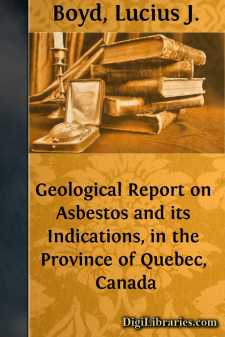Categories
- Antiques & Collectibles 13
- Architecture 36
- Art 48
- Bibles 22
- Biography & Autobiography 813
- Body, Mind & Spirit 142
- Business & Economics 28
- Children's Books 15
- Children's Fiction 12
- Computers 4
- Cooking 94
- Crafts & Hobbies 4
- Drama 346
- Education 46
- Family & Relationships 57
- Fiction 11829
- Games 19
- Gardening 17
- Health & Fitness 34
- History 1377
- House & Home 1
- Humor 147
- Juvenile Fiction 1873
- Juvenile Nonfiction 202
- Language Arts & Disciplines 88
- Law 16
- Literary Collections 686
- Literary Criticism 179
- Mathematics 13
- Medical 41
- Music 40
- Nature 179
- Non-Classifiable 1768
- Performing Arts 7
- Periodicals 1453
- Philosophy 64
- Photography 2
- Poetry 896
- Political Science 203
- Psychology 42
- Reference 154
- Religion 513
- Science 126
- Self-Help 84
- Social Science 81
- Sports & Recreation 34
- Study Aids 3
- Technology & Engineering 59
- Transportation 23
- Travel 463
- True Crime 29
Geological Report on Asbestos and its Indications, in the Province of Quebec, Canada
by: Lucius J. Boyd
Description:
Excerpt
HAVING been called upon to make a close and careful examination of the geological formations in the eastern townships of Garthby, Wolf'stown, and Coleraine, situated in the province of Quebec, Canada, I gave special attention to the distribution of the Asbestos-bearing rocks (serpentine), which have been, in my opinion, heretofore only partially traced. Perhaps this was owing to the difficulties which had to be encountered from the thick undergrowth which in many places rendered it almost impossible to penetrate sufficiently in order to make a true report as regards the "existence," "location," and "association" of these rocks.
Admirable reports have been written by R. E. Ellis, LL.D., Dr. Hunt, and others, on the origin and distribution of the serpentines, and have been fully discussed and ventilated. Still, though various opinions have been expressed upon the subject, they appear to differ in many respects. I mention these facts as possibly one inexperienced or unacquainted with the country might consider it strange that a thorough examination of the Asbestos properties had not been followed. Yet the causes I have mentioned above, as well as the difficulties I had to contend with during the months of heavy snowfall, lead me to believe that my confrères (geologists) were disinclined to follow up a correct and actual prospectus of these valuable serpentinous localities.
Before locating, or going into details of these classes of rock as a mineral repository, I intend to treat on the subject as regards their mode of existence and origin.
Serpentine is diffused under the head of "metamorphic rocks," while, in the widest sense, according to Studor and others, mineral metamorphism means every change of aggregation, structure, or chemical condition, which rocks have undergone subsequently to their deposition and stratification, or the effects which have been produced by forces other than gravity and cohesion.
There fall under this definition the discolouration of the surface of, for instance, black limestone, by the loss of its carbon, the formation of brownish red crusts in rocks of limestone, sandstone, many slatestones, shales, granite, &c., by the decomposition of compounds of iron, finely disseminated in the mass of the rock, the change in rocks consequent in the absorption of water, and the crumbling of many granites and porphyries into gravel, occasioned by the decomposition of the mica and felspar.
In its more limited sense the term "metamorphic" is confined to those changes of rock which are produced directly or indirectly by agencies seated in the interior of the earth. In many cases the mode of change may be explained by our physical or chemical theories, and may be viewed as the effects of temperature or of electro-chemical actions adjoining rocks or connecting communications with the interior of the earth, also distinctly point out the seat from which this change proceeds. In many other cases the metamorphic process itself remains a mystery, and from the nature of the products alone do we conclude that such a metamorphic action has taken place.
Serpentine is generally believed to have been originally deposited as a sediment, and to have acquired its present compact crystalline character through the subsequent action of various chemical, or mechanical, agencies. It is known to be a hydrated silicate of magnesia with about equal parts of silica and magnesia, and contains 12 per cent. of water with varying proportions of iron, chromium manganese, alumina and lime, has a specific gravity of 2.7, and weighs about 169 lbs. to the cubic foot. It is found both in a soft and very compact state, of a waxy lustre, with many different shades of beautiful green which give it a mottled appearance like a serpent, hence the origin of its name "serpentine," or ophite....


